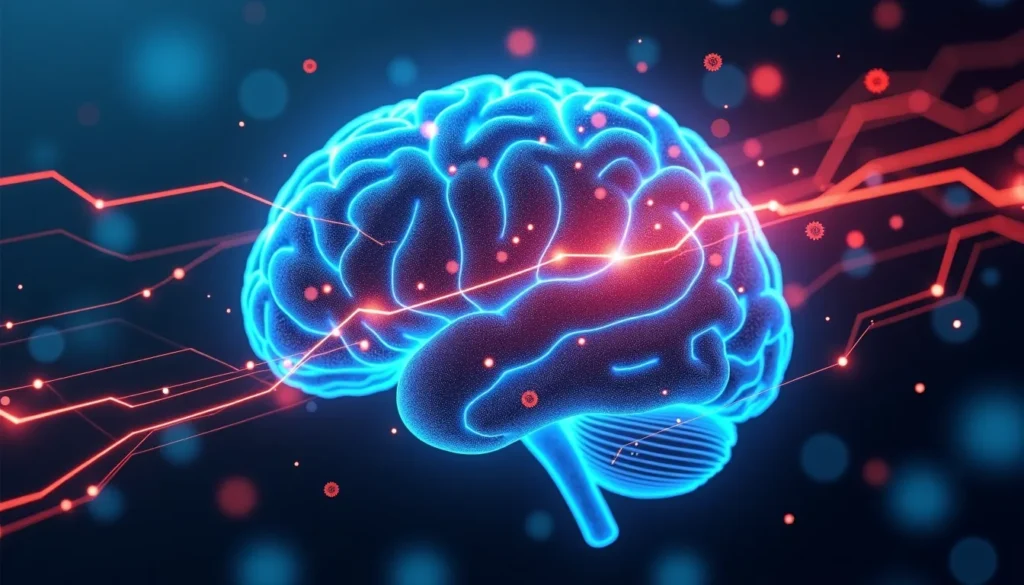AI-Powered Cyber Security Solutions: The Next Evolution in Digital Defense
Introduction
In 2025, AI-powered cyber security solutions stand as the most crucial innovation in protecting digital ecosystems from rapidly evolving cyber threats. Modern organizations face increasingly sophisticated attacks such as ransomware, phishing, and insider breaches, requiring AI cyber security tools that deliver real-time, adaptive defense. AI-powered cyber security solutions leverage advanced machine learning, behavioral analytics, and automation to keep networks, endpoints, and cloud environments secure against both known and emerging risks. This transformation allows enterprises of every size to achieve scalable, intelligent cyber defense with unprecedented efficiency and precision.
With the growing complexity of cyberattacks and explosions in data volume, AI-powered cyber security solutions surpass traditional signature-based tools by analyzing vast datasets in real time. They adapt to novel threats through continuous learning and anomaly detection, stopping attackers before they inflict damage. AI cyber security platforms also empower human analysts by automating manual, repetitive tasks such as alert triage and incident response. This dual combination of high-speed detection and smart automation is why AI-driven security is indispensable for modern, resilient cybersecurity operations.
Today, AI-powered cyber security solutions are increasingly accessible beyond just large enterprises. Advances in cloud platforms, SaaS solutions, and open frameworks make AI-driven cybersecurity affordable and implementable for SMBs as well. This democratization enables broader protection in a digital landscape where both attackers and defenders use AI to gain the upper hand. For any organization aiming to maintain trust, comply with regulations, and safeguard their digital assets in 2025 and beyond, AI-powered cyber security solutions are no longer optional—they are essential.
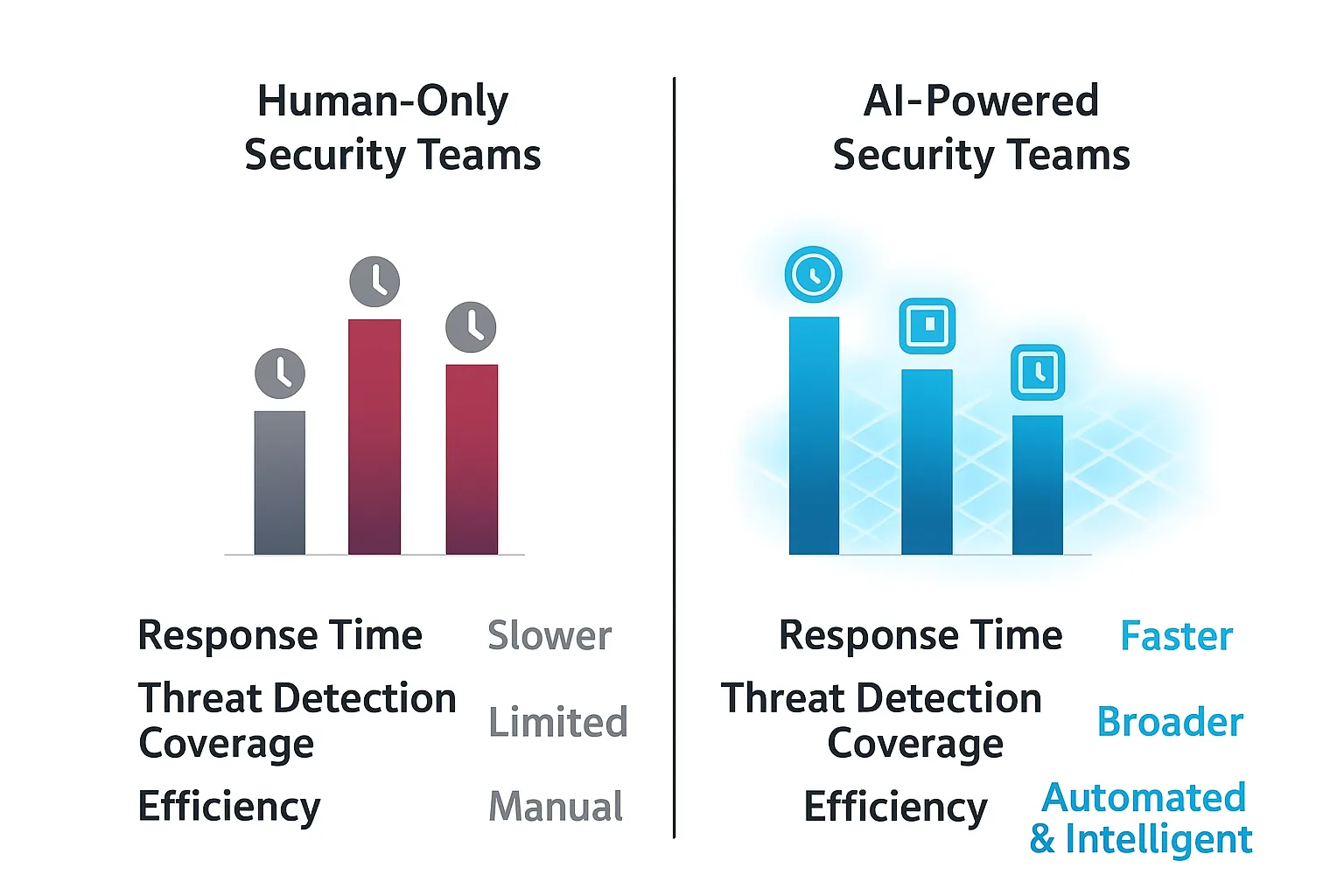
Why AI is Essential in Modern Cybersecurity
The cyber threat landscape in 2025 continues to expand in complexity as enterprises adopt more cloud-native architectures, remote workforces, and IoT devices. AI-powered cyber security solutions are essential in this environment because static, rule-based defenses cannot scale or keep up with the speed and ingenuity of modern attackers. AI enhances cyber security by analyzing enormous volumes of network telemetry, user behavior, and system logs automatically, discovering hidden threats faster than any human analyst could.
One key benefit of AI-powered cyber security solutions is their predictive capability. By leveraging machine learning cybersecurity algorithms, these platforms learn typical user and network behaviors to identify deviations that indicate compromise. They detect zero-day exploits, polymorphic malware, and multi-stage attacks through behavioral analysis rather than relying on outdated signature databases. This adaptability ensures defenses remain robust as adversaries evolve their tactics.
Moreover, organizations using AI cyber security solutions dramatically reduce detection and response times, often shrinking the breach-to-detection window from months or days to minutes or seconds. This accelerated capability directly reduces dwell time and limits business damage. AI-driven security systems also reduce alert noise and false positives, meaning security teams focus only on credible threats and strategic remediation. In today’s threat landscape, no organization can afford to rely solely on manual cybersecurity workflows.
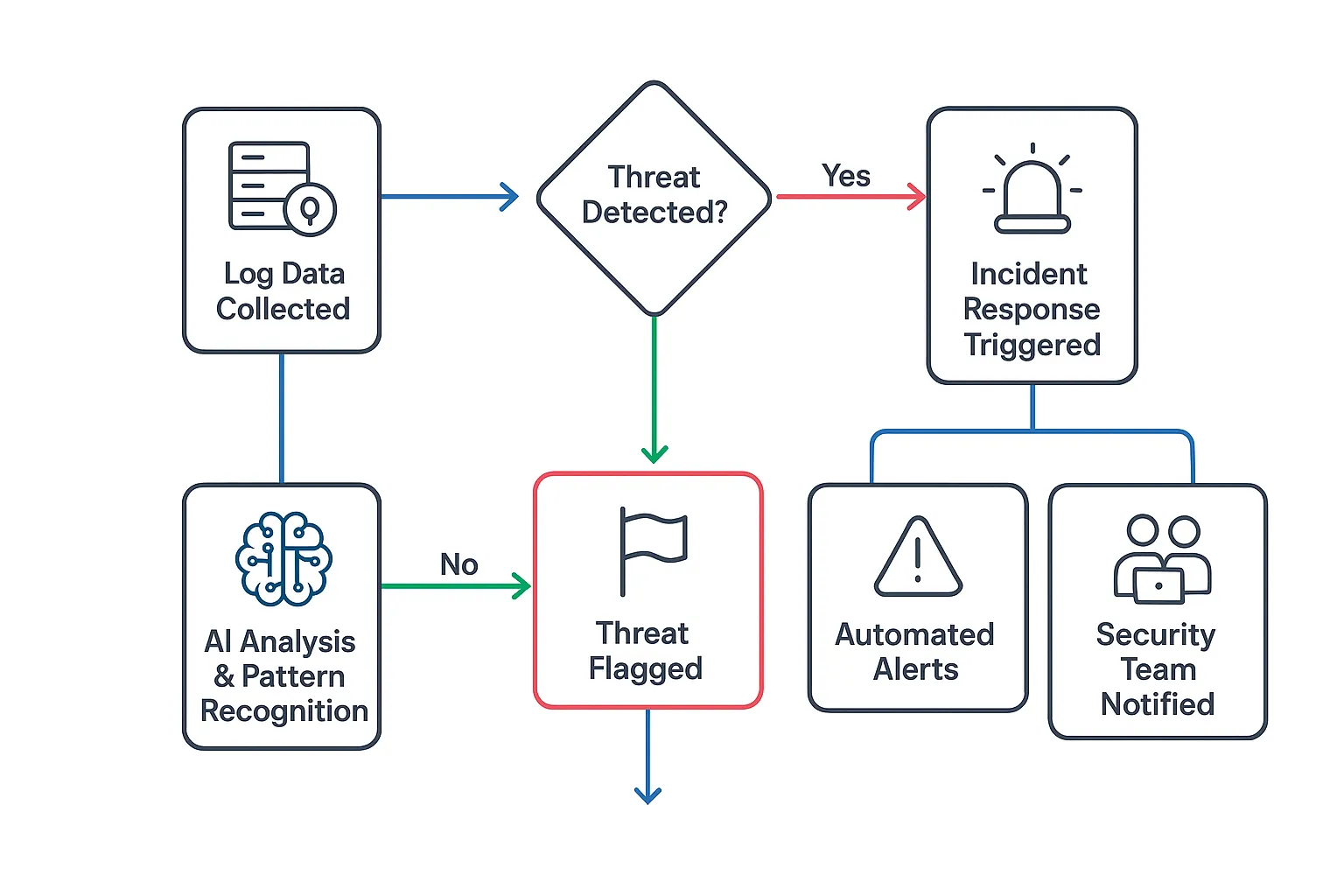
How AI-Powered Cyber Security Works
AI-powered cyber security solutions operate through sophisticated machine learning, deep learning, and natural language processing technologies to analyze cybersecurity data at scale. Machine learning cybersecurity techniques build dynamic profiles of normal network traffic, endpoint activities, and user behavior. These models automatically flag deviations that may represent early indicators of a cyberattack or policy violations.
Deep learning components in AI cyber security solutions enable the detection of advanced threats such as zero-day malware, spear-phishing campaigns, and stealthy lateral movements across networks. By analyzing multiple layers of telemetry simultaneously, deep learning models improve detection accuracy and continuously self-train on fresh data to adjust to adversarial tactics. This makes AI-powered cyber security uniquely effective at defending against unknown or evolving threats.
Natural language processing within these solutions helps transform raw technical data, logs, and threat intelligence feeds into human-friendly insights. AI-driven cybersecurity tools automatically generate incident reports, correlate diverse detection sources, and highlight high-risk events, expediting analyst understanding and investigation. Together, these technologies form a comprehensive security ecosystem that monitors, detects, and responds faster than traditional manual effort ever could.
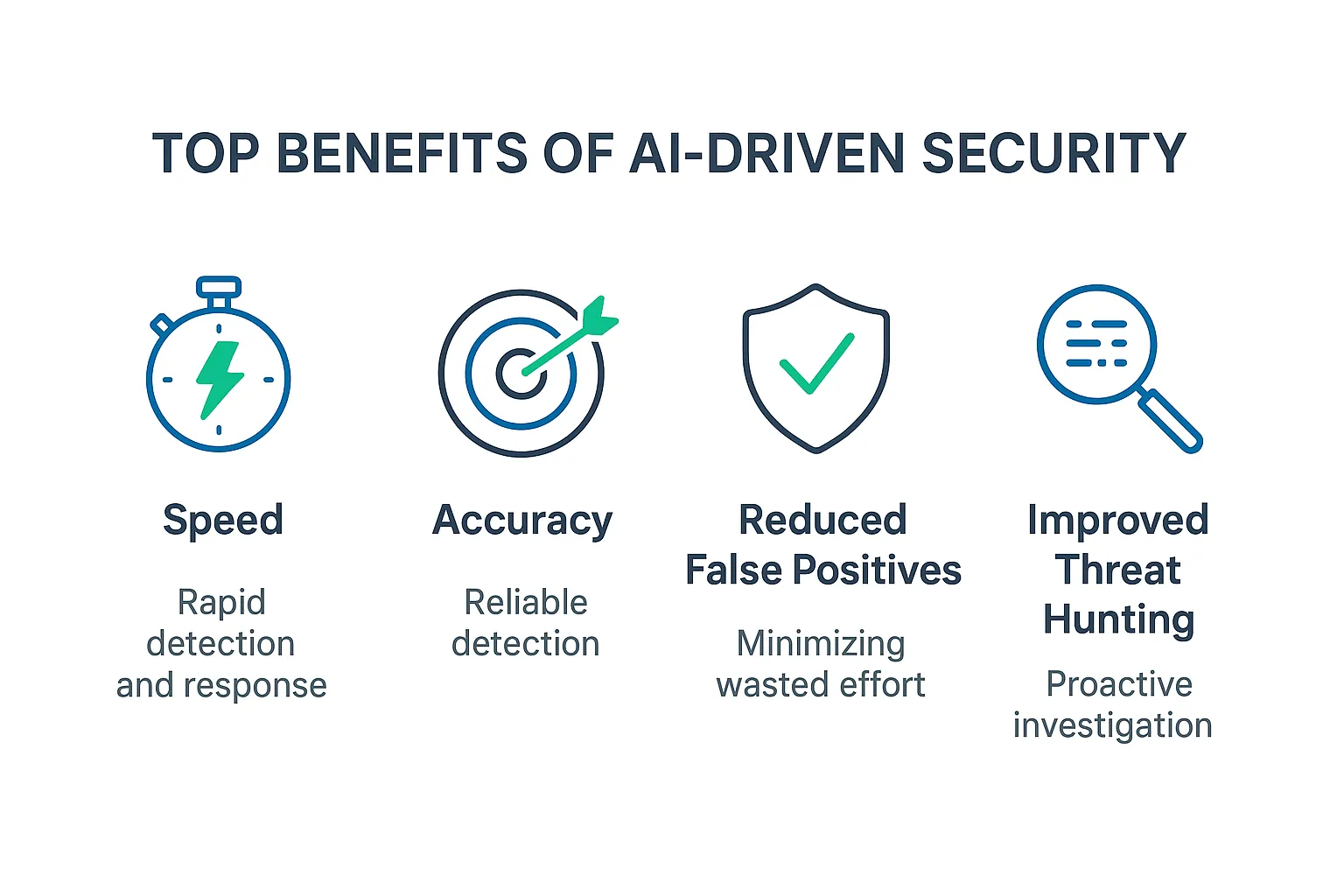
Key Benefits of AI-Driven Cyber Security Solutions
AI-powered cyber security solutions deliver transformative benefits that redefine enterprise security. The foremost advantage is ultra-fast threat detection. These solutions analyze billions of data points from endpoints, cloud instances, and networks in real time, rapidly identifying sophisticated attack patterns and stopping breaches that traditional tools would miss. This speed is essential for minimizing data loss, downtime, and compliance breaches.
Another key benefit is enhanced threat hunting capabilities. AI cyber security platforms weave together disparate data feeds to uncover sophisticated attack chains, insider threats, and stealthy ransomware activities invisible to legacy tools. Security analysts gain powerful predictive insights that empower proactive defenses and remediation strategies, drastically reducing risk exposure.
Finally, AI cybersecurity solutions dramatically reduce false positives, which has long plagued security operations centers with alert fatigue and inefficiency. By intelligently filtering noisy, low-priority alarms, AI refines signal-to-noise ratio and lets security teams focus exclusively on genuine threats. Combined with automated incident response playbooks, this increased precision optimizes SOC productivity and organizational security posture overall.
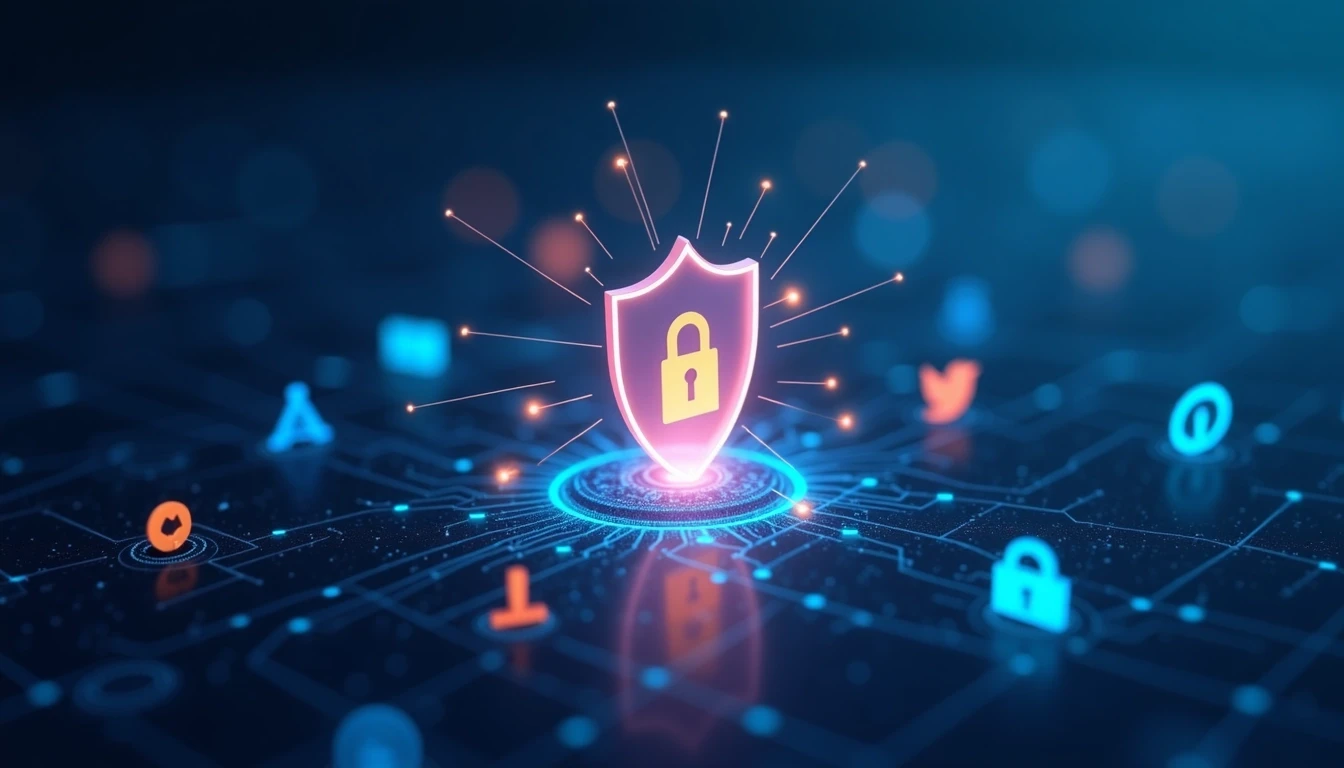
Top AI-Powered Cyber Security Tools in 2025
The market for AI-powered cyber security solutions continues to mature with innovative platforms offering diverse functionalities. SentinelOne leads with its machine learning-driven Extended Detection and Response (XDR) technology, providing rapid endpoint and cloud workload protection through autonomous threat detection and remediation. Its AI-driven security analytics minimize false positives while maximizing detection coverage.
Darktrace is another top player specializing in self-learning AI algorithms that detect and autonomously neutralize novel threats like insider breaches and polymorphic malware. Its Antigena response system acts in real time, shutting down attacks without human latency. CrowdStrike Falcon combines behavioral AI with threat intelligence and cloud-native architecture to offer seamless hybrid environment protection, popular among global enterprises.
Other leaders include Check Point Infinity with unified cloud and network AI-driven threat prevention, and AccuKnox AI CoPilot, which specializes in Kubernetes and cloud-native security automation. These AI cyber security solutions exemplify how AI is now central to modern defense strategies across industries, providing scalable, adaptive, and integrated protection for complex IT landscapes.

Real-World Applications and Case Studies
AI-powered cyber security solutions have proven their value in diverse real-world scenarios. Leading banks, for example, use machine learning cybersecurity tools to identify fraudulent transactions and phishing attempts, achieving a 70% reduction in fraud detection times and significant decreases in false positive alerts. These capabilities help protect critical financial infrastructure and comply with regulatory mandates.
Healthcare organizations also benefit immensely, using AI-driven cyber security solutions to safeguard patient data against ransomware and insider threats. With sensitive medical records and regulatory requirements like HIPAA, AI cyber security platforms enable quick containment of breaches and automated compliance reporting, enhancing patient trust and operational continuity.
Cloud-native enterprises leverage AI cyber security for autonomous red-teaming and vulnerability management, simulating attacker behavior and remediating risks before exploitation. These automated security validation techniques empower businesses to maintain security hygiene and compliance in rapidly changing cloud environments, making AI-driven solutions crucial for 2025’s complex threat landscape.
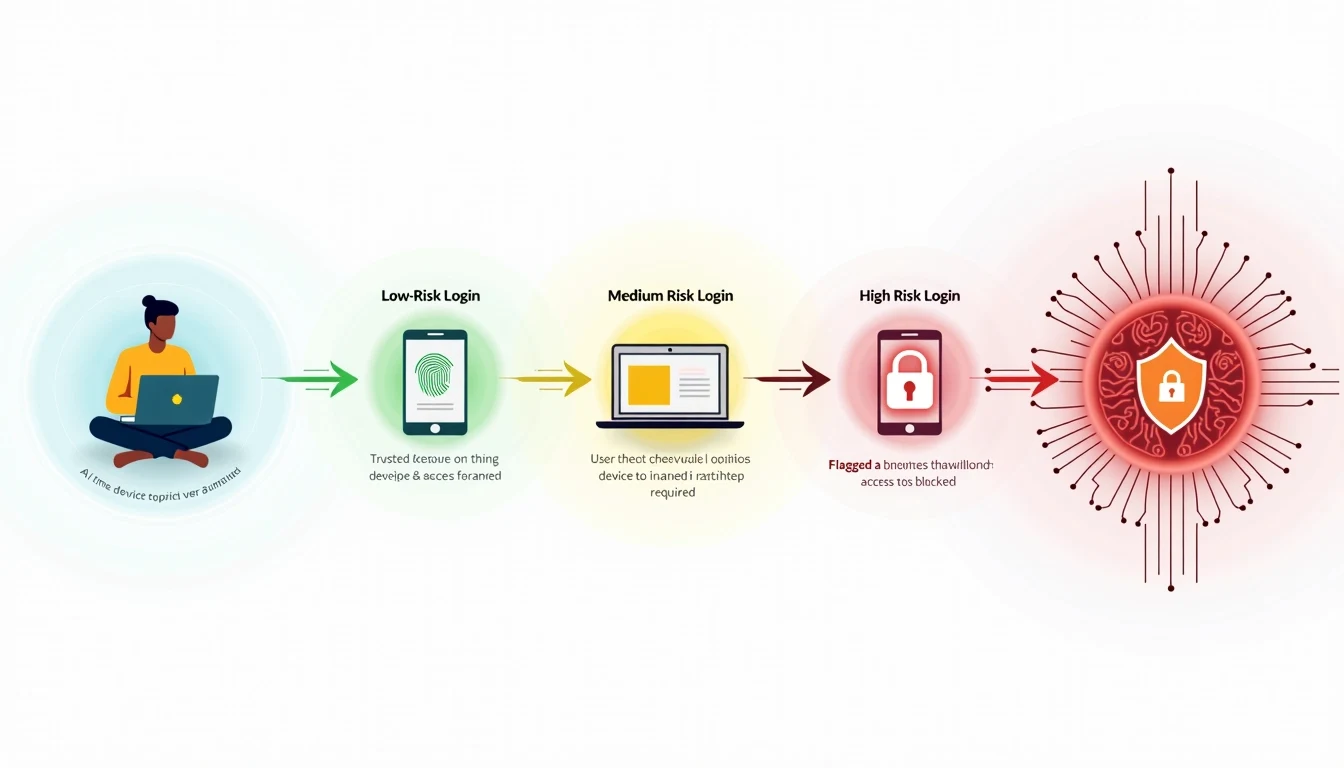
AI in Zero Trust and Identity Security
Zero trust frameworks rely heavily on AI-powered cyber security solutions to enforce real-time adaptive access controls. Instead of static passwords or MFA processes, AI cyber security platforms analyze contextual risk signals including device health, user behavior, location, and session patterns. This dynamic AI-driven identity verification drastically reduces unauthorized access, even against compromised credentials.
Adaptive multi-factor authentication powered by AI further enhances security by tailoring authentication requirements to risk levels dynamically, minimizing friction for legitimate users while blocking suspicious activities. Leading providers like Okta integrate AI cyber security into cloud identity solutions to secure hybrid workforces and distributed digital assets effectively.
Additionally, AI cyber security tools continually monitor biometric, behavioral, and session-level data to flag anomalies that may indicate compromised identities or insider threats. By combining continuous authentication with machine learning cybersecurity models, AI-powered cyber security solutions provide comprehensive identity protection critical to zero trust in 2025 and forward.
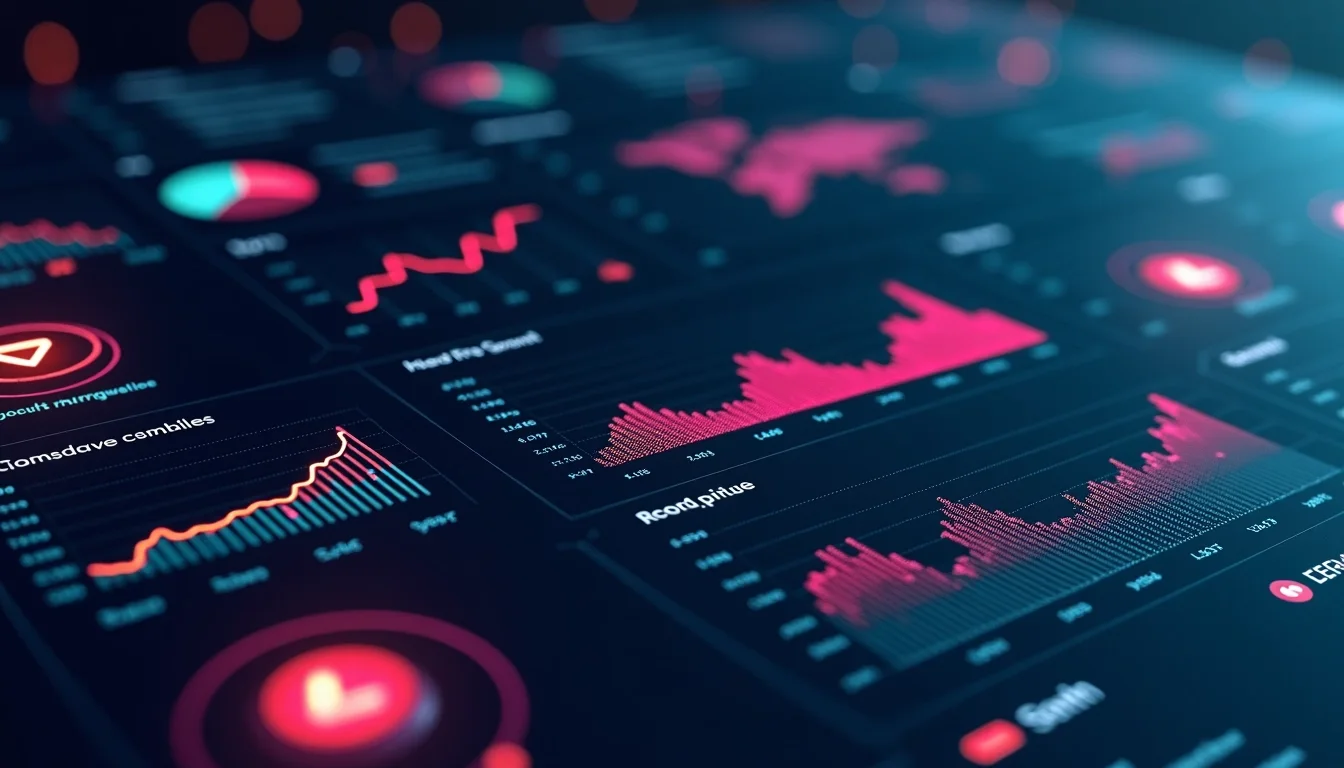
AI for Threat Intelligence and SOC Automation
AI-powered cyber security solutions are revolutionizing Security Operations Centers (SOCs) by automating threat intelligence analysis and incident response workflows. Machine learning cybersecurity models fuse data from endpoints, network sensors, and external threat feeds to present analysts with consolidated, prioritized alerts. Large language models assist by summarizing logs, correlating attack tactics, and generating actionable reports rapidly.
Automated playbook execution powered by AI cyber security enables SOCs to instantly isolate compromised assets, block malicious domains, and initiate communication protocols, significantly lowering mean time to respond (MTTR). This improves overall security posture by enabling proactive interventions and reducing human error or delays.
Furthermore, AI-driven threat intelligence platforms map persistent attacker infrastructures and evolving malware families, feeding updated defensive measures into security ecosystems. This continuous intelligence loop fortifies organizations against emerging cyber threats, making AI-powered cyber security solutions indispensable components of modern SOCs.
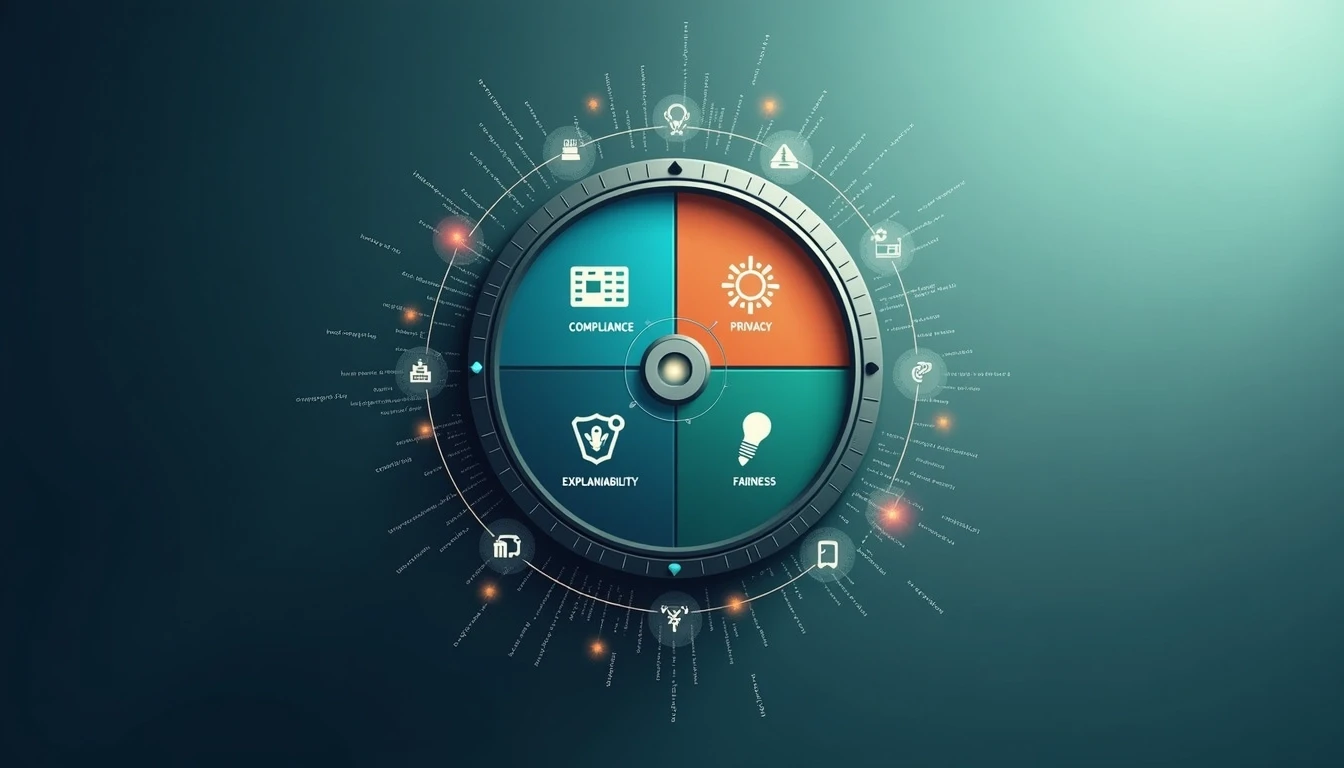
Addressing AI-Driven Risks and Ethical Considerations
Although AI-powered cyber security solutions offer powerful protection, they also introduce complex risks. Adversaries now weaponize AI to create sophisticated phishing attacks, deepfakes, and automated exploits that challenge detection systems. Additionally, attackers may attempt adversarial attacks to fool machine learning cybersecurity models or poison training data to degrade performance.
To mitigate these risks, organizations must apply explainable AI principles, perform adversarial testing, and audit training datasets rigorously. Transparent and ethical AI governance frameworks ensure security models remain fair, reliable, and accountable. Regulatory compliance such as GDPR also mandates privacy-by-design approaches when implementing AI cyber security tools.
Ethical AI deployment involves multidisciplinary collaboration between legal, technical, and security teams to uphold user privacy and data protection while defending against advanced cyber threats. Proper controls and oversight reduce the risk of bias, model drift, or unintended negative impacts, safeguarding both security and societal trust in AI-powered cyber security solutions.

AI-Powered Solutions vs. Traditional Security Tools
AI-powered cyber security solutions represent a paradigm shift compared to traditional signature and rule-based tools. While legacy security depends on human intervention and static detection methods, AI cyber security technologies continuously learn, predict threats, and automate responses, providing superior detection speed and accuracy.
Traditional tools often generate overwhelming false positives, requiring extensive manual triage by analysts. AI-powered cyber security solutions reduce alert noise and focus attention on the most critical incidents, enabling faster, more effective threat containment. Automated remediation capabilities further shorten incident recovery times and minimize operational impact.
Additionally, AI cyber security tools adapt to the evolving threat landscape, using machine learning cybersecurity models that can identify novel malware, ransomware behaviors, and multi-vector attacks unseen by traditional defenses. This adaptive intelligence ensures ongoing protection, even as cybercriminals develop sophisticated evasion techniques.
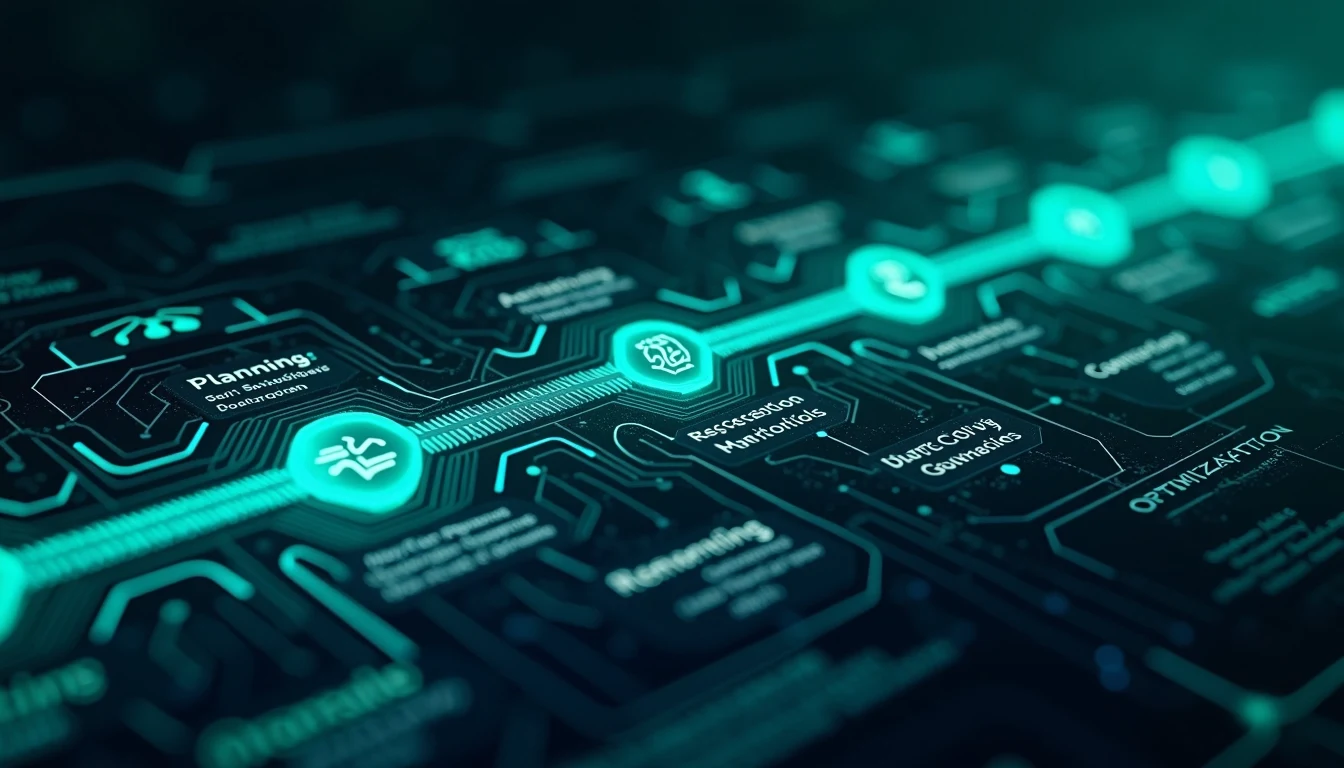
Building an AI-Ready Cyber Security Strategy
Successful adoption of AI-powered cyber security solutions requires a strategic and incremental approach. Organizations must first assess their data infrastructure and cybersecurity maturity to ensure good-quality telemetry and integration capabilities. High-quality data is fundamental for effective machine learning cybersecurity model training and tuning.
Next, prioritizing use cases with the highest business impact, such as cloud security, endpoint detection, and privileged access management, helps optimize resource allocation and ROI. Collaborative planning between IT, security, and executive teams ensures alignment and smooth integration with existing security frameworks.
Lastly, developing human-AI collaboration plays a vital role. Training analysts to interpret AI-generated alerts and maintaining feedback loops for continuous model improvement preserves both accuracy and relevance. Continuous updates, auditing, and ethical oversight help sustain a resilient, compliant AI cyber security strategy tailored for evolving threats and organizational needs.

Future Trends in AI-powered Cyber Security (2026 and Beyond)
Future AI-powered cyber security solutions will increasingly merge with quantum cryptography and blockchain for tamper-resistant, autonomous defense mechanisms. Federated learning will enhance privacy by enabling decentralized AI model training across multiple organizations without exchanging raw data.
Personalized, context-driven security powered by AI will adapt access controls and threat detection measures to individual users, devices, and environments. Real-time, predictive threat hunting platforms will simulate complex attack chains, not only identifying but proactively disrupting cyber threats before material impact.
The expanding integration of AI into IoT, edge computing, and industrial control systems will enable self-healing security environments capable of autonomous defense and recovery. These advances will solidify AI-powered cyber security solutions as a cornerstone of digital trust and resilience, supporting business innovation and secure growth in the years ahead.

Conclusion
AI-powered cyber security solutions are critical to building resilient, future-ready defenses in an era of dynamic cyber threats and expanding digital complexity. By harnessing machine learning cybersecurity models, automation, and continuous threat intelligence, these solutions empower faster, more accurate detection and remediation. Organizations adopting AI cyber security tools experience reduced risk, enhanced compliance, and optimized operations, making AI an indispensable pillar of modern cybersecurity in 2025 and beyond.
These benefits go beyond technical efficiency. AI-powered cyber security solutions allow teams to automate repetitive, manually-intensive threat analysis tasks, dramatically reducing alert fatigue and missed critical incidents. With AI analyzing complex, multi-layered data across endpoints, cloud services, and IoT devices, organizations can detect sophisticated attacks such as malware, ransomware, and insider threats—at speeds and scales unattainable for human-only workflows. Financial institutions, for instance, have slashed fraud detection times by nearly 70%, and overall costs of breaches decrease substantially when AI and automation are deployed.
Implementing AI-powered cyber security solutions also fosters a security-first culture, delivering strategic agility as threat landscapes evolve. Their adaptive, self-learning algorithms continuously train on new data, automating responses and maintaining compliance with evolving regulations. By collaborating globally through shared threat intelligence, organizations contribute to collective resilience against emerging cyberattacks. In every sector, embracing AI-driven cyber security is no longer an option—it’s a foundational requirement for protecting sensitive data, enabling digital transformation, and sustaining business trust in the years ahead.
For more expert insights and the latest updates on AI-powered cyber security solutions, follow AI Tech Unboxed.
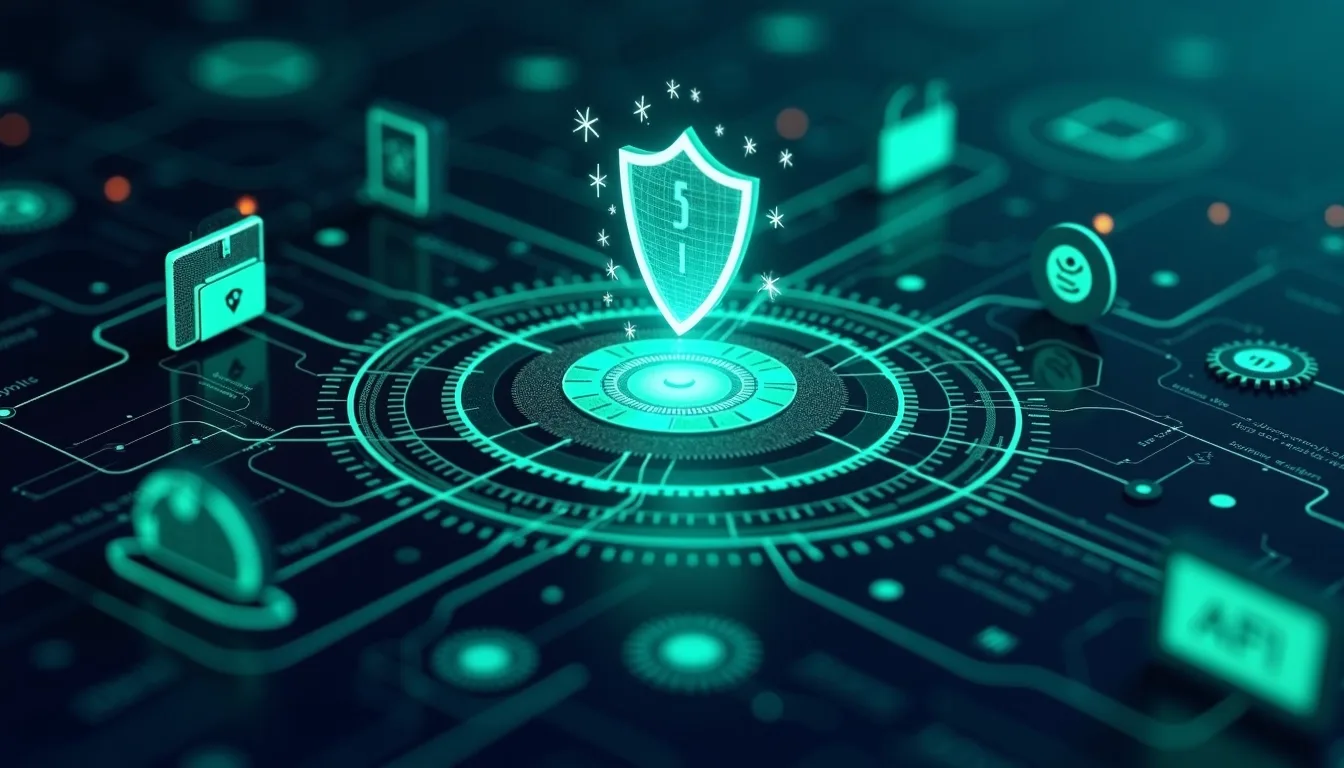
Frequently Asked Questions (FAQs)
Q1: What are AI-powered cyber security solutions?
AI-powered cyber security solutions are specialized software and platforms that use artificial intelligence, machine learning, and data analytics to detect, analyze, and neutralize cyber threats faster and more efficiently than traditional security tools. These solutions continuously learn from new data and identify anomalous patterns, helping organizations prevent both known and unknown attacks.
Q2: How does AI improve threat detection and response in cybersecurity?
AI significantly strengthens threat detection by scanning huge volumes of network traffic, logs, and user activities in real time, quickly identifying subtle anomalies that may signal a developing attack. In addition, AI automates much of the incident response process, isolating affected devices or users, suggesting remediation steps, and closing attack vectors—thus reducing response times from days to minutes.
Q3: Can AI-powered cyber security prevent phishing and malware attacks?
Yes, AI-driven systems excel at identifying and blocking phishing and malware attacks, even those using new or obfuscated techniques. By analyzing email content, attachments, behavioral signals, and external threat intelligence, AI can spot malicious intent with high accuracy, filter suspicious messages, and prevent ransomware or malware downloads before they execute.
Q4: Do AI-powered security solutions work with existing infrastructure and tools?
Modern AI cyber security products are designed to integrate seamlessly with a wide variety of legacy systems, cloud platforms, SaaS tools, and endpoint devices. They enhance, rather than replace, current security controls by feeding intelligence into SIEM solutions, automating processes, and providing additional context and prioritization for security teams.
Q5: Are there any risks or drawbacks to using AI in cybersecurity?
While AI greatly enhances security, it is not immune to risks—attackers can use adversarial AI to bypass defenses, poison training data, or automate social engineering. Additionally, if not carefully validated, AI models may generate false positives or negatives. The best approach is to implement explainable, transparent AI models, regularly review training data, and keep human experts in the decision loop to avoid new vulnerabilities.

